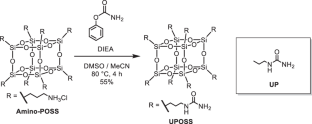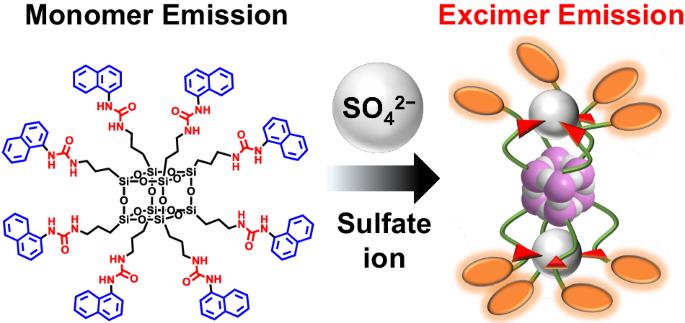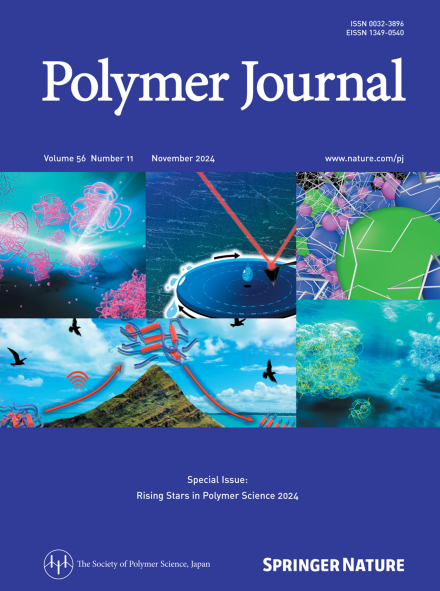基于含有脲结构柔性侧链的多面体低聚硅倍半氧烷,开发用于量化阴离子的荧光传感器
IF 2.3
4区 化学
Q3 POLYMER SCIENCE
引用次数: 0
摘要
由于阴离子在各种生物现象中发挥着重要作用,因此开发荧光阴离子传感器非常重要。此前,我们曾将多面体低聚硅倍半氧烷(POSS)作为一种三维(3D)支架来设计阴离子受体。在本研究中,我们评估了带有八个脲基的 POSS 衍生物的阴离子结合特性,并利用其三维结构将该衍生物应用于阴离子荧光传感器。1H NMR 测量结果表明,带有脲基的 POSS 衍生物可以与硫酸根离子结合。与模型化合物相比,由于多个脲基的协同作用,POSS 衍生物表现出更强的结合能力。通过引入萘基脲基团,POSS 衍生物可用作定量硫酸根离子的荧光传感器。本文章由计算机程序翻译,如有差异,请以英文原文为准。


Development of fluorescence sensors for quantifying anions based on polyhedral oligomeric silsesquioxane that contains flexible side chains with urea structures
Since anions play a significant role in various biological phenomena, developing fluorescence anion sensors is important. Previously, we focused on polyhedral oligomeric silsesquioxane (POSS) as a three-dimensional (3D) scaffold to design an anion receptor. In this study, we evaluated the anion binding properties of an POSS derivative with eight urea groups and applied the derivative to an anion fluorescence sensor utilizing its 3D structure. 1H NMR measurements revealed that the POSS derivative with urea groups can bind to sulfate ions. Compared to the model compound, the POSS derivative exhibits a greater binding ability due to the cooperative effects of multiple urea groups. Through the introduction of naphthyl urea groups, the POSS derivative can be used as a fluorescence sensor for quantifying sulfate ions. Developing fluorescence anion sensors is important because anions play a significant role in various biological phenomena. Herein, we evaluated the anion binding properties of a polyhedral oligomeric silsesquioxane (POSS) derivative with eight urea groups and a 3D structure. The results revealed that the POSS derivative with urea groups can bind to sulfate ions and exhibits a greater binding ability than that of the model compound because multiple urea groups exhibit cooperative effects. Through the introduction of naphthyl urea groups, the POSS derivative can be used as a fluorescence sensor for quantifying sulfate ions.
求助全文
通过发布文献求助,成功后即可免费获取论文全文。
去求助
来源期刊

Polymer Journal
化学-高分子科学
CiteScore
5.60
自引率
7.10%
发文量
131
审稿时长
2.5 months
期刊介绍:
Polymer Journal promotes research from all aspects of polymer science from anywhere in the world and aims to provide an integrated platform for scientific communication that assists the advancement of polymer science and related fields. The journal publishes Original Articles, Notes, Short Communications and Reviews.
Subject areas and topics of particular interest within the journal''s scope include, but are not limited to, those listed below:
Polymer synthesis and reactions
Polymer structures
Physical properties of polymers
Polymer surface and interfaces
Functional polymers
Supramolecular polymers
Self-assembled materials
Biopolymers and bio-related polymer materials
Polymer engineering.
 求助内容:
求助内容: 应助结果提醒方式:
应助结果提醒方式:


